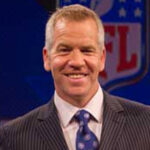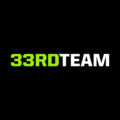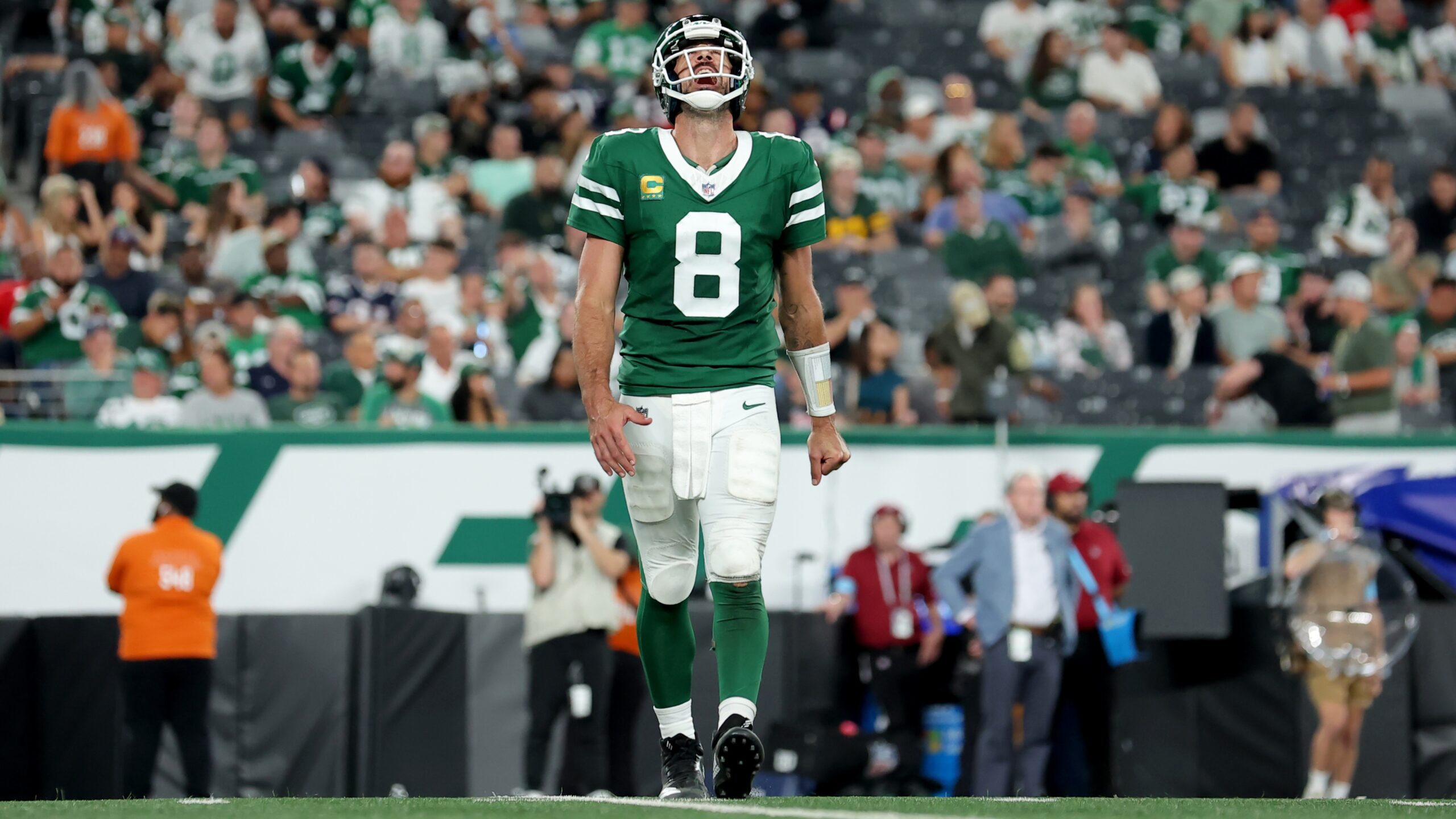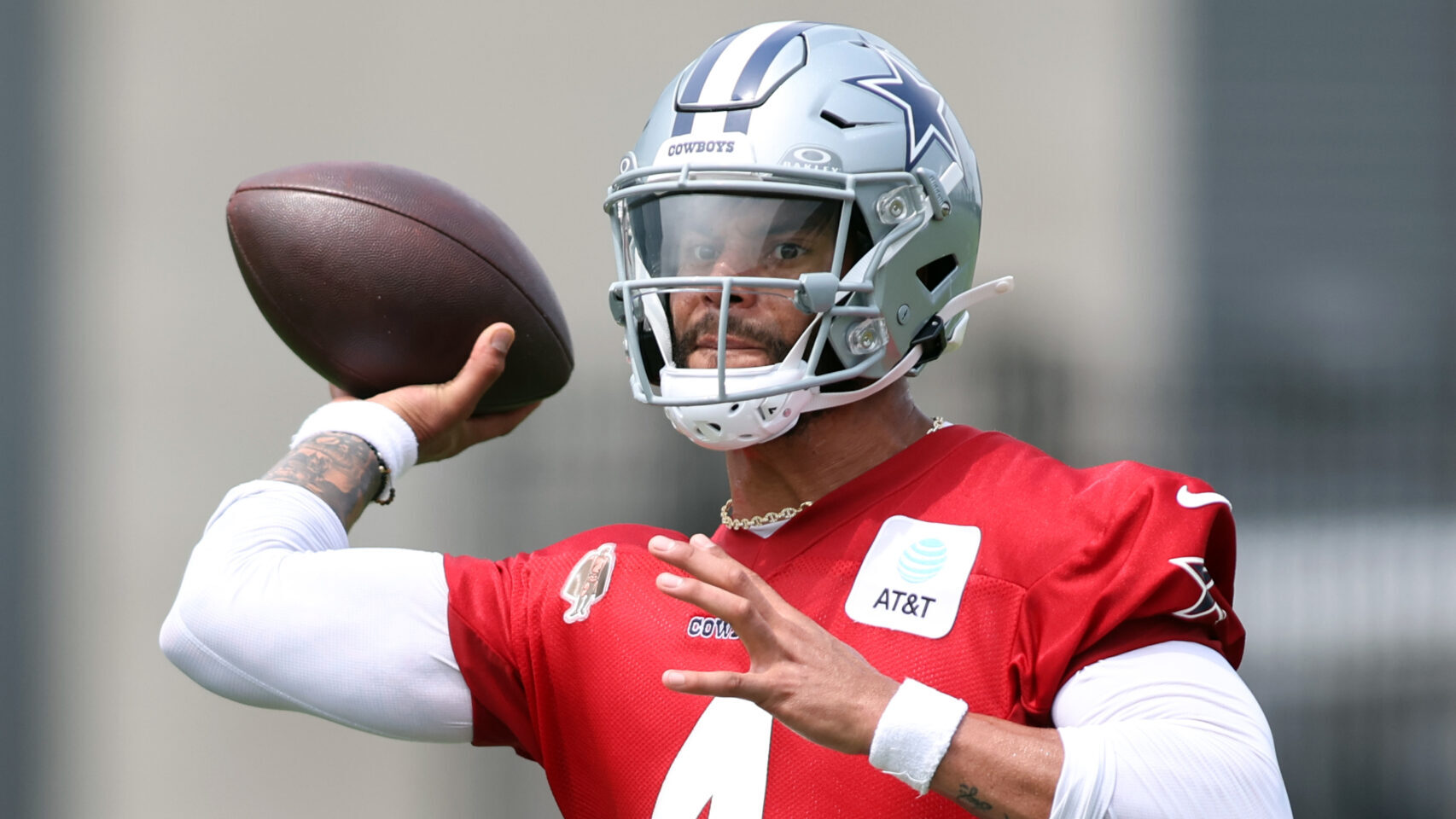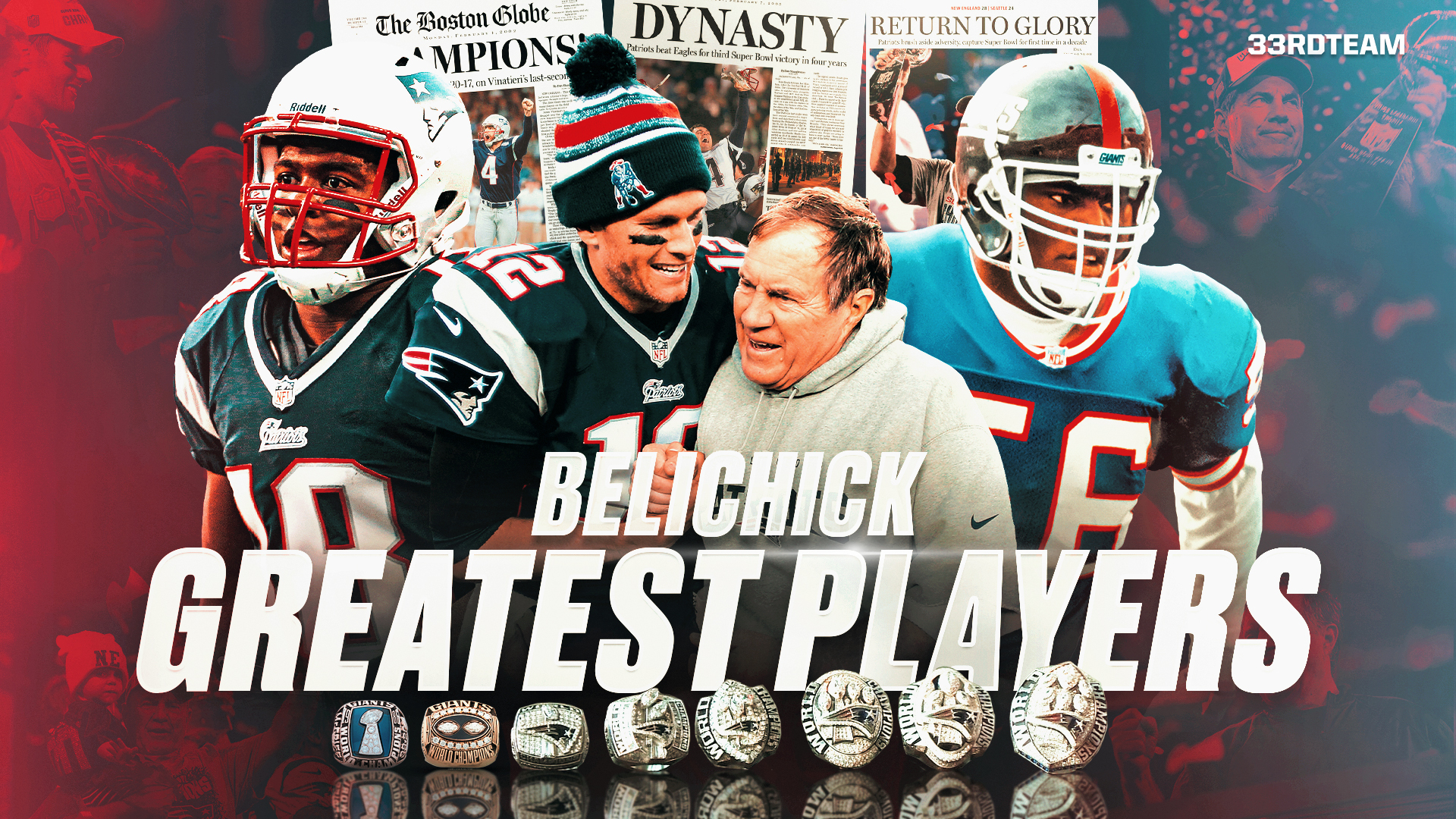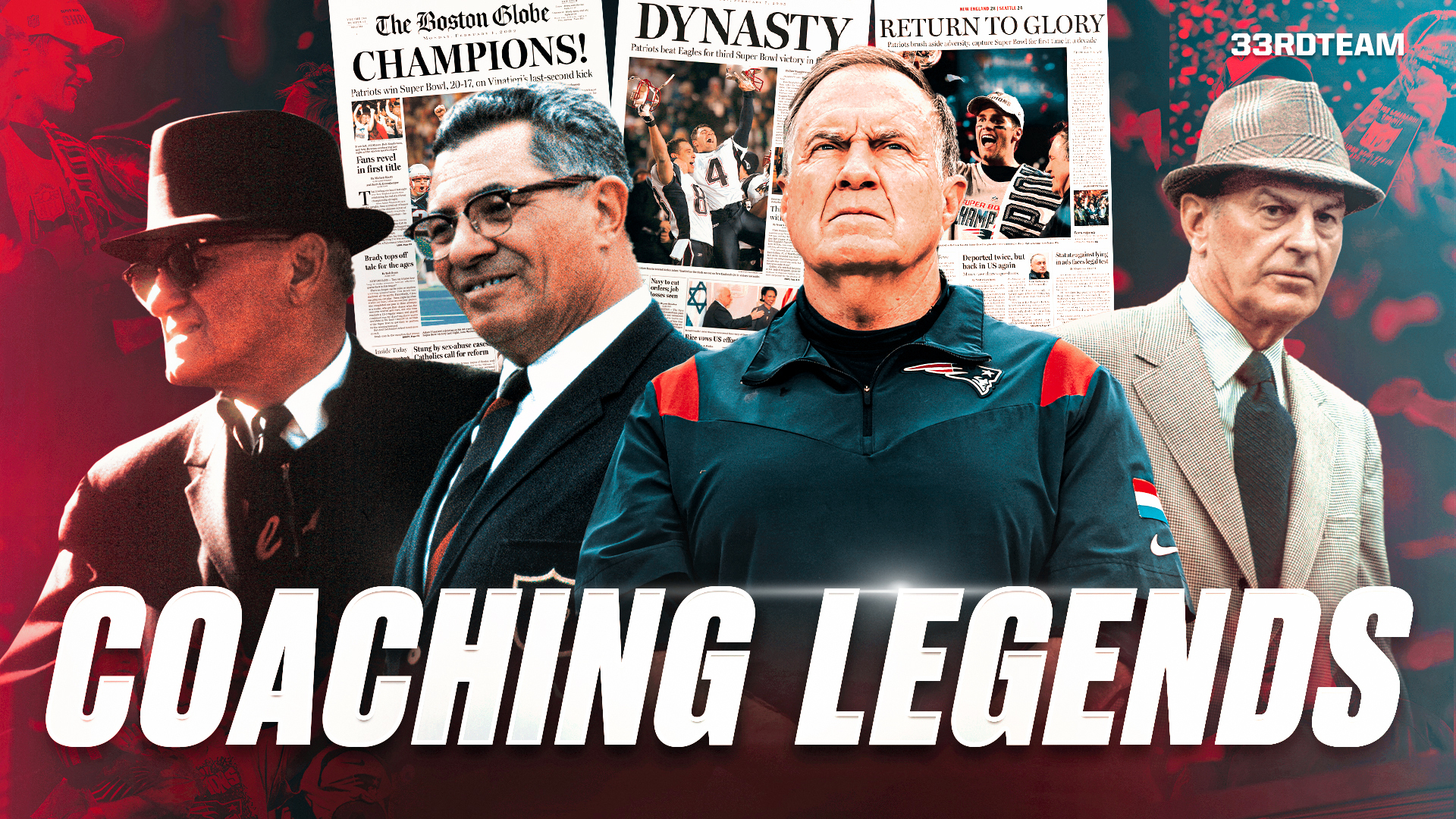Analysis
10/27/22
12 min read
Pre-Snap Read: Bears Need to Lean Into Justin Fields' Unique Skill Set
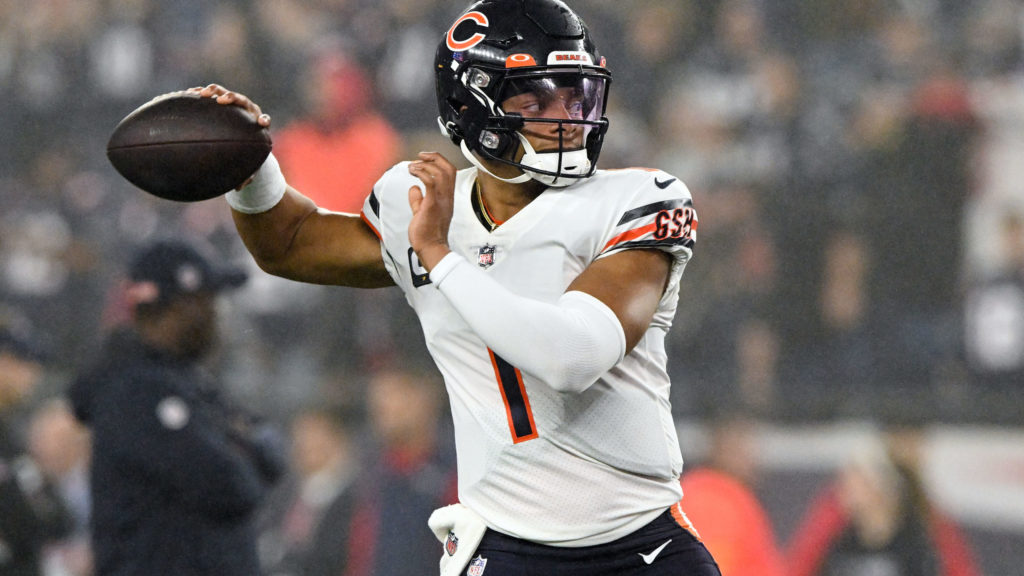
When you travel a lot, it’s in your best interest to seek out the hidden treasures that can exist on the road. I’ve found that one of my favorites in the fall is settling into the airport of whatever city I find myself in, buying the local newspaper, and reading every word about its NFL team.
It’s especially fun on Sundays, when so much of the sports section is dedicated to every layer of the team. You dip your toe into the waters of all things about that team, and an hour later you feel like you have your finger on the pulse of their season.
This fall for my work with Notre Dame football, I’ve been flying in and out of Chicago’s O’Hare Airport and driving to and from South Bend. I’m not sure of the exact ratio of words The Chicago Tribune dedicates to Justin Fields versus the rest of the Bears team, but it’s alarmingly high. His progress, or lack thereof, depending on the week, seems to be the topic at hand, every moment of every day.
The sky is falling. Unless it’s not.
He can part the seas. Unless he’s drowning.
He just needs time. Unless he just can’t play.
He’s ultra-talented. Unless he’s very limited.
Consuming the hyper-coverage a few times this fall has me feeling invested in the Justin Fields drama. And now this! He’s just played his best game of the season, on the Monday night stage, against a Bill Belichick defense that historically gives young quarterbacks fits, and on the heels of a Thursday night game that saw the usual Fields ups and downs ultimately lead to a heartbreaking loss.
What to do with all of that?
I gave myself the assignment of watching his last two games closely, with these rules: 1) Don’t overreact to the positive or the negative, 2) Don’t draw conclusions, and 3) Seek out what worked and why, what’s still an issue, and what part of the Bears’ offensive success last Monday night is applicable to the rest of the season?
First reaction: a tip of the hat to Fields and offensive coordinator Luke Getsy for the work they did together Monday night at New England. The play-calling and play execution, how they married Fields’ strengths to the game situations, was A-level work and a joy to watch.
[bc_video video_id="6314301077112" account_id="6312875271001" player_id="default" embed="in-page" padding_top="56%" autoplay="" min_width="0px" playsinline="playsinline" picture_in_picture="" language_detection="" max_width="640px" mute="" width="100%" height="100%" aspect_ratio="16:9" sizing="responsive" ]
Playing to Fields’ Strengths
Let’s start with Fields’ first two completions on the Bears’ first series. Chicago has the No. 1 rushing offense in the NFL, and a young QB working to find his way. Why not lean on that run game early, with the hopes that it will put the quarterback in a good place on key downs?
Bingo.
Via the ground, Getsy and Fields found themselves in the desirable third-and-manageable after two plays, with a third-and 4. With any run play on the table, including a QB draw or keep around either side, Getsy has even more of an advantage than most coordinators do on that down and distance.
From the shotgun he rolled Fields out to his right, and Fields found a wide-open receiver on a simple out route for a gain of 20 yards.
Very next play – again leveraging the NFL’s top-ranked running game and a quarterback who’s excellent outside the pocket – Getsy had Fields take the snap from under center, which forced the linebackers to respect the run even more. Fields faked a stretch run play to his right, rolled left outside the opposite tackle, and set up to find a crossing route in front of him for another first down. An ideal initial drive: Two pass plays and a key 31 yards that led to a field goal. Fields didn’t throw a pass until a friendly third-and-4 that was called right in his wheelhouse, immediately followed by another call that moved him out of the pocket in the other direction, with short to intermediate options in front of him.
Excellent. And just the start. The next one-two combo of a Getsy-Fields positive ties together Monday night’s win with the previous week’s loss to Washington.
Fields is not at his best when asked to line up under center, take a five- or seven-step drop, and deliver the ball 15 to 20 yards downfield, either to the middle of the field or to the sideline. He just doesn’t look comfortable doing so, and has struggled to find consistent success with this part of his game.
Yet, there are parts of the field – especially against zone defenses – that an offensive coordinator must be able to attack and expose, and will often do so with routes that are connected with the timing of that five- to seven-step drop. Think about the middle of the field, when linebackers widen and safeties drop, that deep “In” route, or a “Dig,” a “Big Over,” or whatever it’s called in a particular offense. It’s a necessary tool in the passing game toolbox.
And throwing to the sideline, when corners are soft and the flat is left uncovered, a deep out route or comeback has to be on the play sheet, and needs to be found with consistency. Getsy knows that, knows what his quarterback does and doesn’t do well, and proceeded accordingly.
Late in the first half against the Commanders, Fields lined up in the shotgun with a running back to his left. At the snap, he rode the back on a fake run play to the right, slightly drifted with him, then set up behind the right tackle, and fired a 20-yard out route on target for a first down. Such a smart way of accessing a part of Washington’s zone coverage that was asking to be exposed.
Getsy didn’t ask Fields to take the snap, drop back seven steps, and fire to the sidelines without a hitch, which is a difficult exercise in footwork, balance, weight transfer and anticipation. Instead, he allowed Fields to take the snap from the shotgun, execute a play-action fake that put him on the move, take one little step back followed by one little bounce up for rhythm, and let it go.
Boom!
The timing of the release, which is all important on the deep sideline routes, wasn’t compromised. Fields got rid of the ball on time for an 18-yard out route; Getsy just allowed him to set up in a way that was much more comfortable to him, which was smart.
Fast forward to a second-quarter first-and-10 Monday evening in Foxboro. Again from the shotgun, this time with a play-action ride to the left, Fields moved down the line of scrimmage with the running back. After the extended play fake, he hopped back one step, set up behind the left tackle, then stepped into an in route 15 yards over the middle. Perfect.
Perhaps the most traditional hole to seek out in a zone defense, the one between the linebackers and underneath the safeties, accessed in a non-traditional way – with your quarterback in the gun, threatening a run, slightly on the move, changing the launch point, and quickly releasing the ball.
[bc_video video_id="6314450291112" account_id="6312875271001" player_id="default" embed="in-page" padding_top="56%" autoplay="" min_width="0px" playsinline="playsinline" picture_in_picture="" language_detection="" max_width="640px" mute="" width="100%" height="100%" aspect_ratio="16:9" sizing="responsive" ]
Old-School Mixed With New-School
I love seeing Fields and Getsy getting the ball to old-school soft spots in a zone, with new-school play-action and setup points in the pocket. All of which are nods to how well the Bears run the ball, and how comfortable Fields is with play-action and subtle movement in the pocket.
The Getsy-Fields tandem also took occasion to remind us that the old recess rules still apply. If you have the most dangerous player on the field at quarterback, it’s not a bad idea to just snap him the ball and let him take off running.
Fields scored the first touchdown of the night this way, and also converted a key third down with the same simple play, which led to a touchdown pass on the next play. Simple, but effective, in small doses and at important times.
And while it’s fun to watch a young OC call a game to his young QB’s strengths, I detected a nice portion of the Bears’ offensive success against the Patriots was way more Fields than Getsy; more QB talent than OC scheme.
The quick-hitter touchdown pass down the line of scrimmage to Khalil Herbert? Fields had an A-plus reaction to immediate pressure in his face, excellent command of the ball, and did a wonderful job of changing release points in a split second to find a passing lane to Herbert.
The back-to-back first-down pickups late in the first half on third-and-14 and third-and-16? Amazing job of eluding pressure in the pocket, accelerating into open space, and making defenders miss to move the chains in highly unlikely situations. Both were truly special plays that led to points later in the drive.
His best play of all came on third-and-7 halfway through the third quarter, with a call that intended for him to drop straight back in the pocket and remain there for the throw. But when the left side of the line got beaten early and a rusher was on him right away, his solution was next level. He did a reverse spin to his left to avoid the sack, kept his mind focused on the pass, nonchalantly set up outside the tackle box, spotted TE Cole Kmet running down the sideline with Devin McCourty trailing a yard behind him with his back turned, and lofted a perfect pass that allowed Kmet to catch it as he fell to the sideline. Reaction,
calmness, recognition, and touch all came together for a 25-yard gain that glowed in the foggy, Foxboro night.
Issues in Need of Fixing
Back to my original self-assigned task of not overreacting to Fields’ recent success. It means I can’t overlook his challenges that still might appear to cost the Bears first downs, and possibly even wins, starting as early as Sunday in Dallas.
With a longer stride and a bit more of a windup than most quarterbacks, consistent accuracy is an issue for him: Fields’ 56% completion rate will be the lowest of all starting quarterbacks this weekend. That lunging lead step can make proper balance and weight transfer difficult, and a release with a lot of play in it invites flaws to potentially come into every throw.
But anticipation may be the biggest concern, as Fields continues to show a need to “see it” before he cuts it loose. If he can progress in that area, a leap into the next echelon of NFL starting quarterbacks is within his reach. If he stays where he is, the Bears may also stay right where they are in passing offense – dead last.
Leaning Into Run Game
But I’d like to close – and look ahead – by latching onto a specific piece of the positive Fields created Monday night, and how it relates to the rest of the season.
The Bears converted 11 of 18 third downs against the Patriots. That’s an elite single-game accomplishment, evidenced by the fact that only the Chiefs and Bengals joined Chicago at a rate above 60% in Week 7. Yet Patrick Mahomes and Joe Burrow accomplished this by throwing the ball
all over the yard with precision, often from a traditional pocket, as each passed for more than 400 yards. Fields threw for 179.
The difference in passing yards is stark, and it’s pointed out for a reason.
Fields found success on key downs when he set up at the traditional point of the pocket behind the center, as well as when he set up behind the left tackle, and the right tackle. He moved the chains running the ball when the play called for him to run to the left, to the right, and up the middle. He completed designed rollouts to his right, as well as to his left. He evaded pressure in the pocket by scrambling both ways and up the middle, and improvising to find open receivers downfield.
And because his quarterback playmaking is paired with the NFL’s most productive run game, which saw David Montgomery and Herbert combine for 164 yards on 27 carries against the Patriots, he doesn’t need to approach 300 yards through the air for the Chicago passing game to be considered successful on any given night.
The Bears won three of their first seven games to be relevant as fall turns to winter. For them to win five of the next seven and be a contender heading into the holidays, they need to lean into the unique parts of Fields’ skill set and meet him where he is right now.
As they did Monday night in their most significant win yet.
WATCH MORE: Dan Quinn on Justin Fields
[bc_video video_id="6314455082112" account_id="6312875271001" player_id="default" embed="in-page" padding_top="56%" autoplay="" min_width="0px" playsinline="playsinline" picture_in_picture="" language_detection="" max_width="640px" mute="" width="100%" height="100%" aspect_ratio="16:9" sizing="responsive" ]
